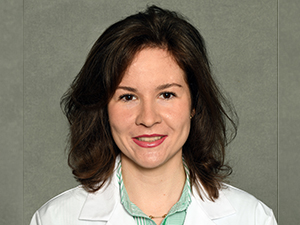
by Jennie Hamilton, M.D., Ph.D. (PGY-1)
As we traveled to our first UAB House Calls visit, I thought of the iconic image of a physician carrying the classic black doctor bag, a frequent sight at the turn of the 20th century. Briefly, I mentally compared the work of two doctors separated by more than a century before my thoughts turned back to our first patient.
Ms. B was a 58-year-old woman with progressive chronic pain and metabolic disease. I had reviewed her electronic medical record (EMR) in preparation for the day. Her many routine office visits, symptoms, exams, diagnoses, and prescriptions had been carefully documented over the past decade.
As I clicked through all clinic and hospital notes over a 10-year period, I wondered what had happened in her life that had rendered her unable to physically go to a doctor’s office. I did not find a specific answer to my question in her compartmentalized EMR. In reading through her chart, however, I was impressed by how hard she seemed to have tried over the years to improve her health through primary care and specialist appointments. She had even undergone gastric bypass surgery, which ultimately was not a solution for her weight and chronic pain problems.
For a moment, I pondered whether the doctor with the black bag could have answered my question more readily. As we arrived at Ms. B’s home, I thought how those early 20th-century doctors must have known the value and privilege of seeing patients in their homes surrounded by the intimate details of their daily lives—their neighborhood and community, the character of their house, the personality of their porch. We knocked on the front door and were promptly welcomed by Ms. B’s sister. As she guided us through the foyer and hallway, the walls reflected cherished quotes and pictures while the shelves displayed the keepsakes and trinkets meaningful to the people who lived there. Upon entering Ms. B’s bedroom where she lay on her bed, I could see she was unable to physically rise and greet us. Nevertheless, she welcomed us with a most beautiful and sincere smile that I will always remember.
While the attending physician talked with Ms. B, I observed some details of her room. Clusters of vials, prescription lotions, medical equipment, and supplies were located close by for frequent access, all indicative of Ms. B’s chronic afflictions. I recognized how the details of one’s home provide doctors with meaningful information not only about the patient’s medical circumstances but also about the patient’s social and psychological support system. During the physical exam, we identified an intertriginous rash with early signs of infection for which Ms. B explained she had some prescription lotion somewhere nearby. Following her directions and with a little searching, we found the lotion buried among an assortment of other creams and supplies in a nightstand drawer. As I helped my attending physician clean Ms. B’s rash and apply the antimicrobial lotion, one of Ms. B’s home health caregivers, KT, entered the room. KT was receptive and attentive as we educated her about Ms. B’s dermatological condition and demonstrated how to cleanse the skin, which ointment to use, how much to apply, and how to apply it. It was a spontaneous opportunity, one that would be difficult to replicate in any other setting besides the patient’s home.
I recalled the iconic physician with the black doctor bag, many versions of which have been portrayed on TV and in literature. For example, the rugged “Doc Adams” from the classic Western series *Gunsmoke* frequently tended to patients in their homes. I contemplated how far the UAB House Calls Program had progressed from the days represented by that lone doctor. In the modern-day system, patients like Ms. B who enroll in the UAB House Calls program are typically medically complex, functionally debilitated, and often face challenging social determinants. The House Calls Program reaches out to such people who otherwise might face insurmountable barriers to obtaining medical care. Today, Ms. B’s UAB House Calls visit consisted of a coordination of events carried out by an interdisciplinary team of doctors, nurses, and social workers. With the use of portable technology, we electronically sent prescriptions to the pharmacy, coordinated care with specialists, and scheduled follow-ups and routine screening appointments, all from Ms. B’s bedroom.
Although the technology has advanced through the decades, I realized the value of the house call has remained the same. It is still mutually beneficial in both tangible and intangible ways. We provided quality care to Ms. B while we simultaneously gained knowledge about her that we could not have gathered during a routine clinic visit, much less through a search of her EMR. As the doctor with the black bag surely recognized, it is an honor to see patients in their homes where they open their personal world to you. As we said our goodbyes, I reflected upon all the progressive troubles that Ms. B had experienced through the years. I was humbled as I returned her beautiful departing smile.